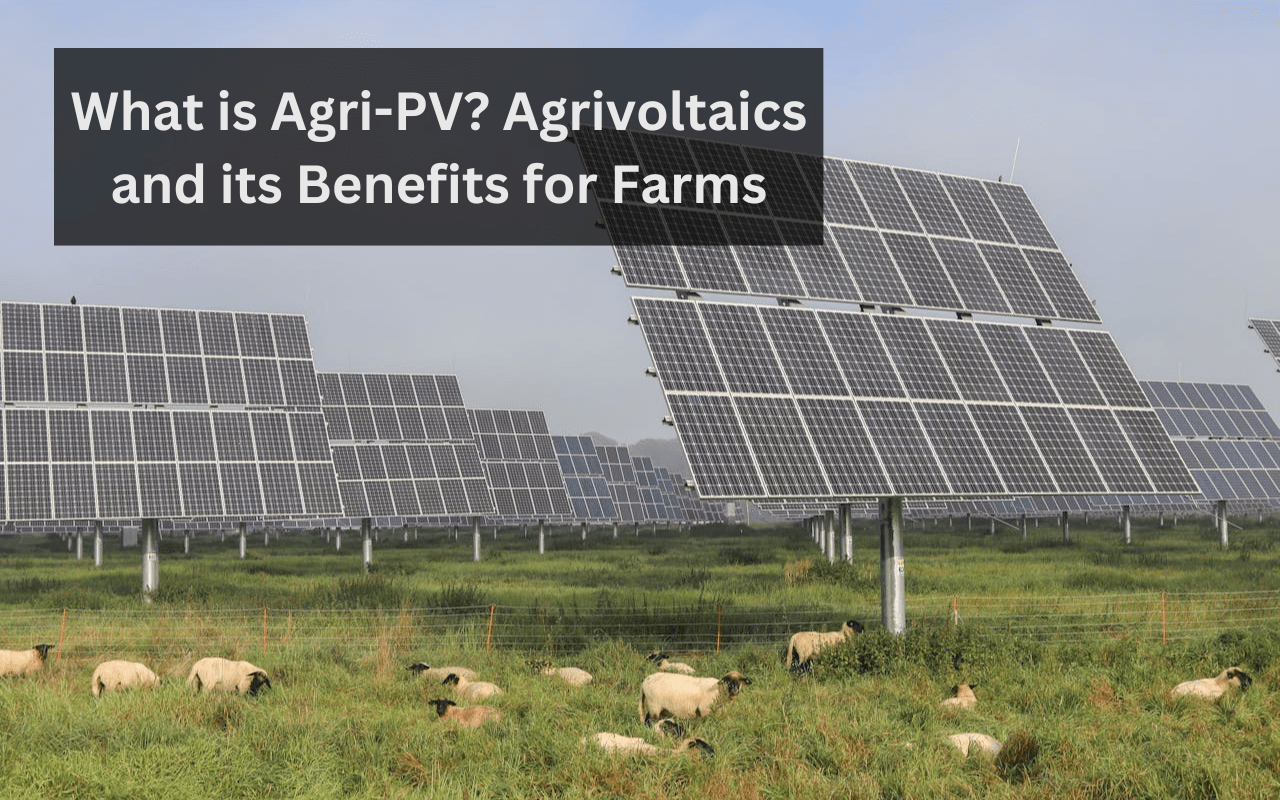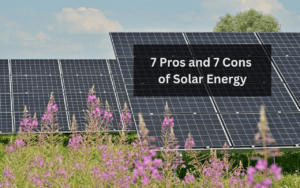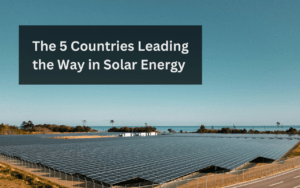Agrivoltaics, or agrophotovoltaics, combines the cultivation of crops and the generation of solar energy on the same land, optimizing the use of space for both food production and renewable energy generation. This innovative approach not only maximizes land efficiency but also helps in making agriculture more sustainable and energy-intensive processes more eco-friendly.
In this article, we will explore the concept of agrivoltaics, tracing its development from its inception in the 1980s to its current applications across the globe. We’ll cover the numerous benefits it offers to both the agricultural and energy sectors, look at successful implementations around the world, and discuss the challenges and future potential of this promising technology.
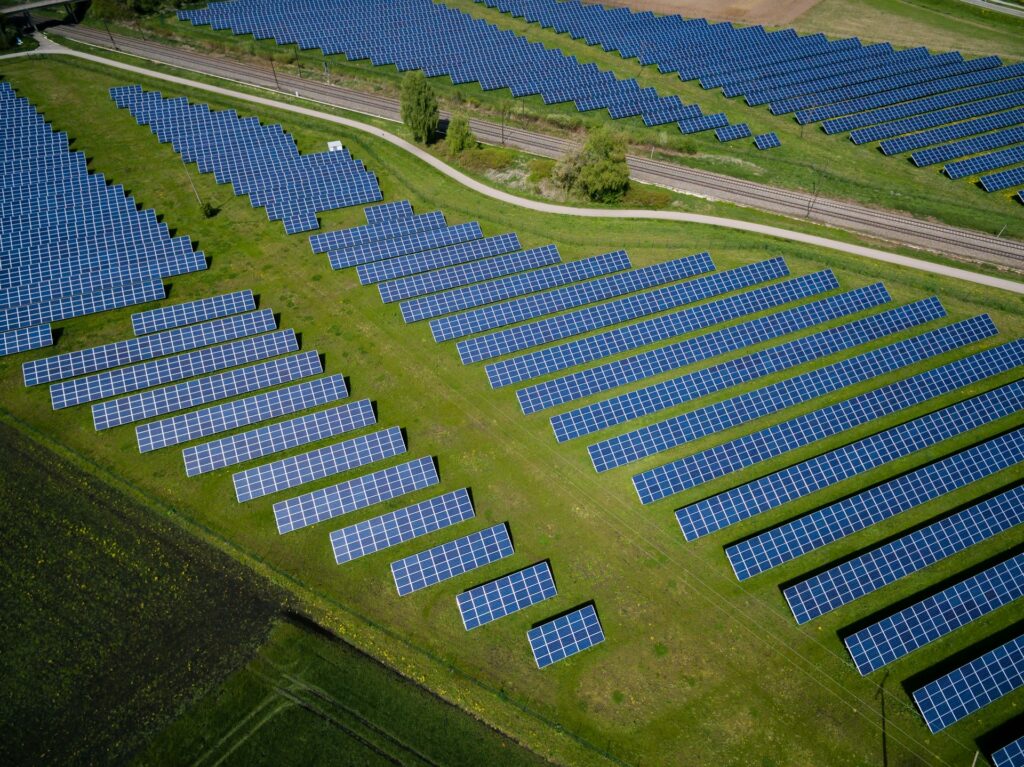
Table of contents
What is agrivoltaics?
Agrivoltaics, also known as agrophotovoltaics, Agri-PV, or agrisolar, combines the dual use of land for both solar energy production and agriculture. The approach was first conceptualized in 1981 by German physicists Adolf Goetzberger and Armin Zastrow. It involves integrating photovoltaic systems with agricultural operations, allowing for the simultaneous cultivation of crops and generation of electricity on the same land.
The concept and its varieties
Agrivoltaics can take several forms, depending on the type of agricultural activity – ranging from crop production to livestock, and including setups like greenhouses and pollinator-friendly environments. The primary goal is to optimize the shared use of land to enhance the total output of solar electric power and agricultural yield.
System design and trade-offs
Designing an agrivoltaic system requires balancing a number of factors. One key aspect is managing the amount of sunlight that reaches the crops below, which involves calculating the optimal spacing and orientation of solar panels to benefit both energy production and plant growth. This balance can sometimes enhance crop yield and quality due to reduced heat stress and water evaporation.
Adaptation across regions
Different regions have adapted agrivoltaic systems to suit local agricultural practices and energy needs. In Europe and Asia, where the concept has seen significant development, systems often have elevated solar arrays which allows for easy access for farm machinery. In contrast, simpler adaptations might involve using existing solar installations, such as panels on barn roofs, or mixed-use setups where livestock graze among solar arrays.

How has agrivoltaics evolved?
The concept of agrivoltaics has evolved significantly since its inception in the early 1980s by German physicists Adolf Goetzberger and Armin Zastrow. Originally aimed at optimizing land use and increasing the efficiency of energy production, agrivoltaics has expanded to address a broader range of agricultural and energy needs.
Early development
Initially, agrivoltaics was focused on the basic integration of photovoltaic systems with crop production. The earliest systems were designed to minimize the competition for sunlight between solar panels and plants. Goetzberger and Zastrow’s pioneering work involved configuring the placement and orientation of solar panels to maximize sun exposure to the panels while providing beneficial shade to crops below.
Technological innovations
Over the years, the technology used in agrivoltaics has become more sophisticated. Innovations have included adjustable solar tracking systems that optimize the angle of panels throughout the day to capture maximum solar energy while managing light exposure for the crops underneath. These systems also consider factors like solar irradiance, climate, and the specific needs of different crops to enhance both agricultural output and energy efficiency.
Expansion across the globe
From its roots in Europe, agrivoltaic technology has spread worldwide, adapting to various agricultural practices and climatic conditions. In Asia, particularly in countries like Japan and China, agrivoltaics has been integrated into a variety of farming practices, including those involving livestock and greenhouse operations. This expansion is a response to increasing land scarcity and the need to produce more energy and food on limited acreage.
Contemporary applications
Today, agrivoltaics is not just about co-locating solar panels and crops. It involves a broader application of dual-use systems where solar technology is embedded in different agricultural infrastructures, from vineyards and orchards to aquacultural ponds. The integration extends to supporting biodiversity, such as creating habitats for pollinators around solar installations, which enhances ecological benefits alongside agricultural and energy production.
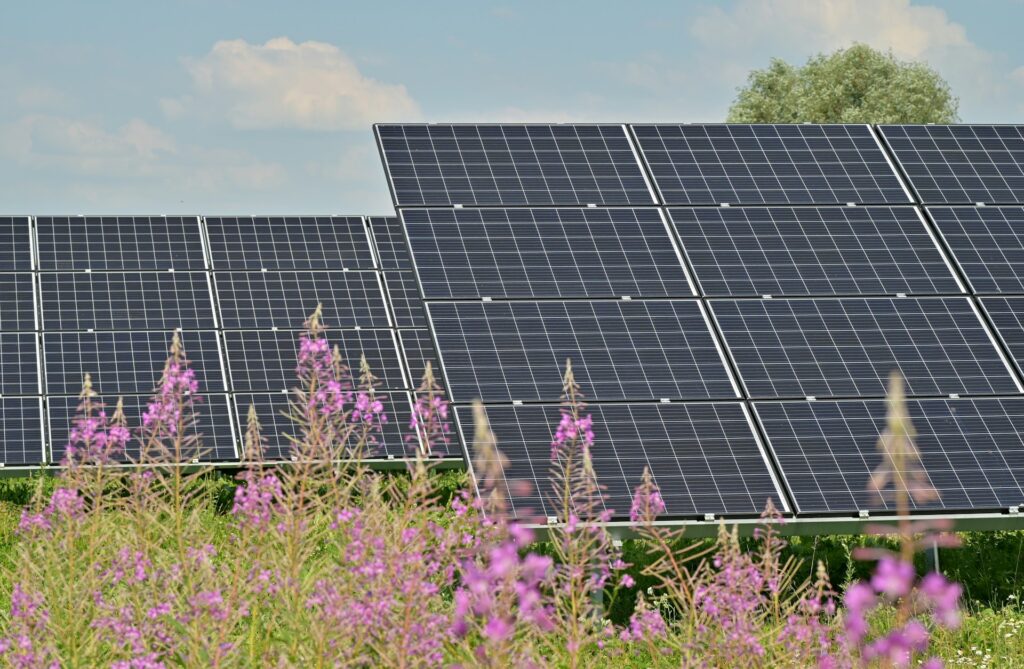
What are the benefits of agrivoltaics?
Agrivoltaics offers a number of benefits which span both agriculture and energy production, making it an increasingly attractive option for sustainable development. Here are some of the key advantages:
1. Increased land efficiency
One of the primary benefits of agrivoltaics is the dual use of land, which maximizes the productivity of a given area. By combining solar energy generation with agricultural practices, agrivoltaics allows for the efficient use of land resources, providing a solution to the challenge of land scarcity. This is particularly significant in densely populated or arid regions where land is at a premium.
2. Enhanced agricultural output
Agrivoltaic systems can improve agricultural yield by modifying the microclimate of the crops beneath the solar panels. For example, the shade provided by the panels can lead to reduced heat stress on plants and decreased water evaporation from the soil. This can be especially beneficial for sensitive crops or in regions with intense sunlight and low rainfall. Studies have shown that certain crops, like lettuce and potatoes, can thrive under the partial shade provided by solar arrays, potentially increasing their yield and quality.
3. Reduction in water usage
The shade from solar panels also helps to reduce water usage by minimizing evaporation. This is critical in drought-prone areas where water conservation is essential. The ability of agrivoltaic systems to maintain moisture uniformly in the soil can lead to more sustainable water practices in agricultural processes.
4. Protection against weather extremes
Solar panels in agrivoltaic systems can protect crops from extreme weather conditions such as hail, heavy rain, and excessive sunlight. This protective barrier can reduce crop damage and loss, enhancing food security and reducing the vulnerability of farmers to climate variability.
5. Renewable energy production
Agrivoltaics contributes to renewable energy goals by generating clean solar power. This not only helps in reducing the carbon footprint associated with conventional energy production, but also supports global efforts to combat climate change. The electricity generated can power local farming operations, reducing the dependence on non-renewable energy sources and potentially lowering energy costs.
6. Additional revenue streams for farmers
By incorporating agrivoltaics, farmers can generate additional income through the sale of solar power to the grid. This diversification of income sources can help stabilize farm income, which is often subject to fluctuations due to market changes and environmental factors.
7. Biodiversity and ecosystem benefits
Agrivoltaic installations can enhance biodiversity by creating habitats that support a variety of flora and fauna. The structures used for mounting solar panels can serve as shelters for wildlife, and the less intensive use of the land can promote the growth of native vegetation and the activity of pollinators.
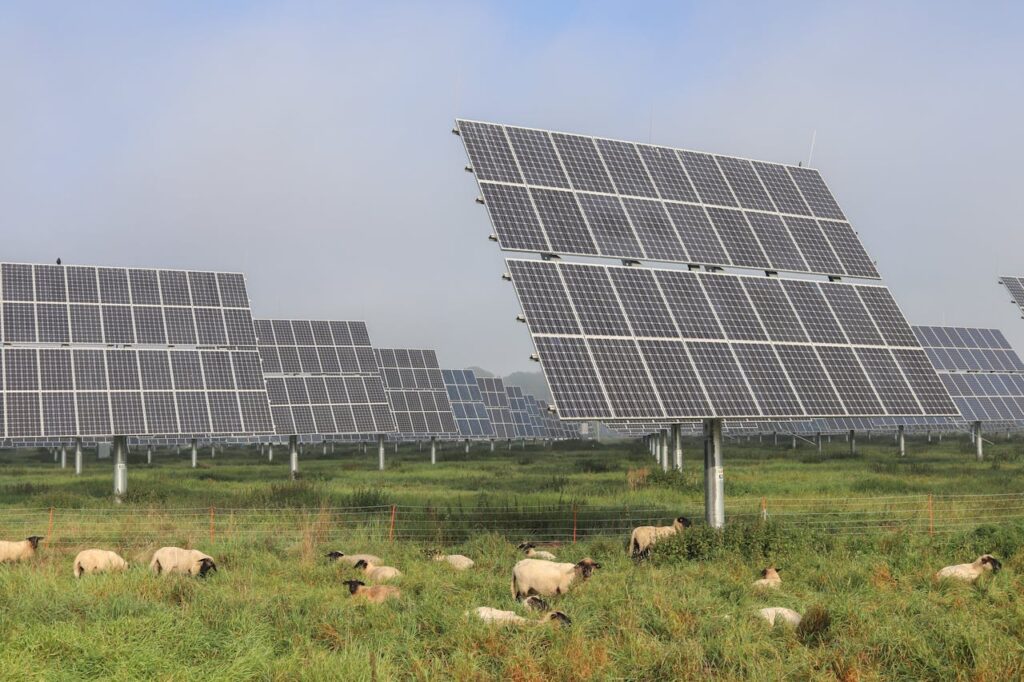
Global implementations and success stories
Agrivoltaics is gaining traction globally, with numerous successful implementations demonstrating the practical and economic benefits of this innovative technology. Here are some notable examples from around the world:
1. Germany
In Germany, a demonstration plant in the Rhenish mining area has been exploring different agrivoltaic concepts to optimize the coexistence of agriculture and solar energy production. This project, supported by research institutions like the Jülich Research Centre and the Fraunhofer Institute for Solar Energy Systems, focuses on finding the best crops and system designs for agrivoltaics. The initiative highlights Germany’s commitment to integrating renewable energy with agricultural practices, aiming to maximize land use and energy efficiency.
2. Japan
In its uptake of agrivoltaics, Japan has introduced ‘solar sharing’ initiatives, where farmers install solar panels above their crops without significantly affecting agricultural productivity. This approach has been particularly successful in regions where arable land is scarce, helping farmers maintain crop yields while also generating solar energy. Japan’s approach is a leading example of how agrivoltaics can be adapted to different environmental and cultural contexts.
3. United States
In the United States, agrivoltaic systems are being tested in various states, including Arizona and Massachusetts. These projects often focus on demonstrating how solar panels can protect crops from the midday sun and extend growing seasons, while also providing a steady energy output. For instance, a project at the University of Arizona has shown that shading from solar panels can significantly increase the yield of certain vegetable crops, demonstrating the potential for agrivoltaics to improve food and energy production simultaneously.
4. Kenya
In Kenya, agrivoltaics has helped local farmers reduce water usage and increase crop yields. A project involving solar panels over crops like cabbage and lettuce has demonstrated growth improvements of up to one-third larger than those grown under direct sunlight. This installation not only cuts down on the farm’s energy costs by 50% but also addresses challenges like extreme weather and water scarcity, which are critical issues in many parts of Africa.
5. France
France is exploring agrivoltaics with a focus on greenhouses. The country is developing large-scale agrivoltaic greenhouses that use solar panels as part of the roof structure. This setup allows for the controlled environment necessary for high-value crops while generating electricity. Such innovative applications showcase the flexibility of agrivoltaics to adapt to various agricultural needs and climatic conditions.

Challenges and considerations
While agrivoltaics offers promising solutions for dual land use and sustainability, several challenges and considerations must be addressed before its full potential can be realized.
1. Technological and financial costs
Implementing agrivoltaic systems often involves higher initial costs than traditional farming or solar setups. The specialized equipment, such as elevated solar panels and tracking systems, can be expensive. In addition, the integration of such technology requires upfront investment in research and development to ensure that both energy and agricultural outputs are optimized.
2. System design and compatibility
Designing systems that effectively balance the needs of crop production and solar energy generation presents a significant challenge. Factors like the choice of crops, the height and spacing of panels, and the local climate all influence the system’s overall efficiency and effectiveness. Getting the design right is crucial to ensure that the solar panels do not adversely affect crop yield and that agricultural activities do not impede solar performance.
3. Regulatory and policy frameworks
Agrivoltaics is a relatively new field, and in many regions, specific regulatory frameworks are still under development. Challenges include things like zoning laws, land-use restrictions, and subsidies that are not always aligned with the dual-use nature of agrivoltaic systems. Ensuring supportive policies that encourage the adoption of agrivoltaics is very important for its expansion.
4. Farmer adoption and training
For agrivoltaics to be widely adopted, farmers must be convinced of its benefits and trained in new techniques. Changing traditional farming practices requires education and demonstration of the economic and environmental benefits of agrivoltaics. Overcoming skepticism and unfamiliarity with the technology can be a big hurdle in many agricultural communities.
5. Environmental impacts
While agrivoltaics can have positive environmental impacts, such as reducing water usage and enhancing biodiversity, there are also potential negative impacts to consider. For example, large-scale installations could disrupt local ecosystems or wildlife if not properly managed. It’s essential to conduct thorough environmental impact assessments to mitigate any adverse effects.
6. Market and economic viability
The economic viability of agrivoltaics can vary significantly depending on regional market conditions, the cost of electricity, and agricultural commodity prices. Projects must be tailored to local economic realities to be financially sustainable. This includes considerations of energy market prices, potential subsidies, and the economic benefits to the local farming and rural communities.

The future of agrivoltaics
As agrivoltaics develops, we’re likely to see enhancements that bring together renewable energy and sustainable farming more effectively. We can expect to see improvements in solar panel efficiency and smarter systems that better manage how light and shade affect crops, possibly through innovations like transparent solar panels or advanced solar trackers that respond dynamically to the sun’s movements, ensuring optimal energy capture while supporting crop health.
The future direction of agrivoltaics will also be shaped by a growing focus on climate change and the need to use land more efficiently. With more support likely from governments and organizations prioritizing sustainability, we could see stronger policies and more funding for research. Public-private partnerships could play a crucial role in spreading agrivoltaic technology, potentially integrating it into urban planning and smart city initiatives as a sustainable solution for city-based agriculture and energy needs.
In essence, agrivoltaics is moving toward a more integrated approach to using land, aiming to balance energy efficiency with agricultural productivity. This approach supports broader sustainable development goals and could help tackle some of today’s most pressing environmental issues.
Want to read more about agrivoltaics? Check out these helpful articles from solaredge.com and rwe.com.
For further reading, you might be interested in the following:


